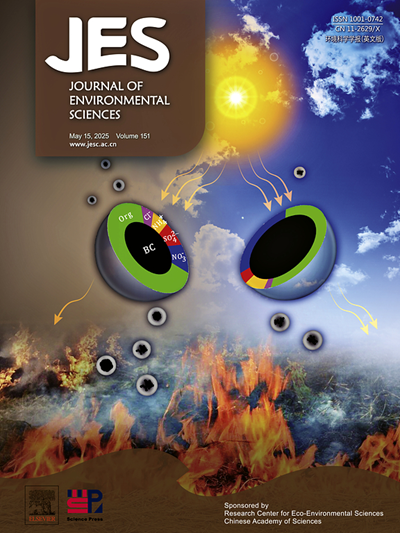金属污染农业土壤中丰富和稀有微生物类群对三种铁碳复合修正的响应
IF 5.9
2区 环境科学与生态学
Q1 ENVIRONMENTAL SCIENCES
引用次数: 0
摘要
传统的铁碳复合材料(Fe-C)改良下的微生物演替研究主要集中在整个微生物群落,很少关注丰富或稀有类群的响应和生态作用。本研究通过90天的微观培养,研究了fe3o4修饰生物炭(FeC-B)、铁-天然腐植酸(FeC-N)和铁-合成腐植酸(FeC-S)三种Fe-C添加对丰富和稀有亚群落分布模式、组装过程和生态功能的影响。结果表明,Fe-C对稀有类群α-多样性有显著影响,特别是在FeC-B处理下,对丰富类群的影响最小。Fe-C修正也重塑了这两个群体的群落结构。稀有分类单元(OTU)丰度占总丰度的1.6%,但占总丰度的63.9%,在群落多样性中起着关键作用,且对Fe-C修正更敏感。一些罕见的分类群转变为丰富的状态,显示了它们作为微生物种子库的潜力。丰富的类群在网络中处于更中心的位置,Fe-C的应用促进了丰富和稀有物种之间的合作互动。确定性过程主导了罕见亚群落的组装,而随机过程主要影响丰富的细菌群落。Fe-C修正降低了稀有类群间的群落分化,增加了丰富类群间的变异。稀有类群的功能多样性超过丰富类群,且氮循环相关基因在Fe-C处理下显著增强。本研究强调了丰富和稀有类群在土壤修复中的互补作用,为优化修复策略提供了见解。本文章由计算机程序翻译,如有差异,请以英文原文为准。
Response of abundant and rare microbial taxa to three iron-carbon composite amendments in metal-contaminated agricultural soil
Traditional studies of microbial succession under iron-carbon composite (Fe-C) amendment application have focused on the entire microbial community, with limited attention to the responses and ecological roles of abundant or rare taxa. Herein, a 90-day microcosm incubation was conducted to investigate the effects of three Fe-C amendments, including Fe3O4-modified biochar (FeC-B), ferrihydrite-natural humic acid (FeC-N), and ferrihydrite-synthetic humic-like acid (FeC-S), on distribution patterns, assembly processes, and ecological functions of both abundant and rare subcommunities. Our results showed that Fe-C amendments significantly affected the α-diversity of rare taxa, particularly under FeC-B treatment, with minimal impact on abundant taxa. Fe-C amendments also reshaped the community structures of both groups. Rare taxa, representing 63.9 % of Operational Taxonomic Unit (OTU) richness but only 1.6 % of total abundance, played a key role in community diversity and were more susceptible to Fe-C amendments. Certain rare taxa transitioned to abundant status, demonstrating their potential as a microbial seed bank. Abundant taxa were positioned more centrally within the networks, and Fe-C applications promoted cooperative interactions between abundant and rare species. Deterministic processes dominated the assembly of the rare subcommunity, while stochastic processes primarily influenced the abundant bacterial community. Fe-C amendments reduced community differentiation among rare taxa while increasing variability among abundant groups. Functional diversity of rare groups surpassed that of abundant groups, with notable enhancement in nitrogen cycling-related genes under Fe-C treatments. This study highlights the complementary roles of abundant and rare taxa in soil remediation, providing insights for optimizing remediation strategies.
求助全文
通过发布文献求助,成功后即可免费获取论文全文。
去求助
来源期刊

Journal of Environmental Sciences-china
环境科学-环境科学
CiteScore
13.70
自引率
0.00%
发文量
6354
审稿时长
2.6 months
期刊介绍:
The Journal of Environmental Sciences is an international journal started in 1989. The journal is devoted to publish original, peer-reviewed research papers on main aspects of environmental sciences, such as environmental chemistry, environmental biology, ecology, geosciences and environmental physics. Appropriate subjects include basic and applied research on atmospheric, terrestrial and aquatic environments, pollution control and abatement technology, conservation of natural resources, environmental health and toxicology. Announcements of international environmental science meetings and other recent information are also included.
 求助内容:
求助内容: 应助结果提醒方式:
应助结果提醒方式:


